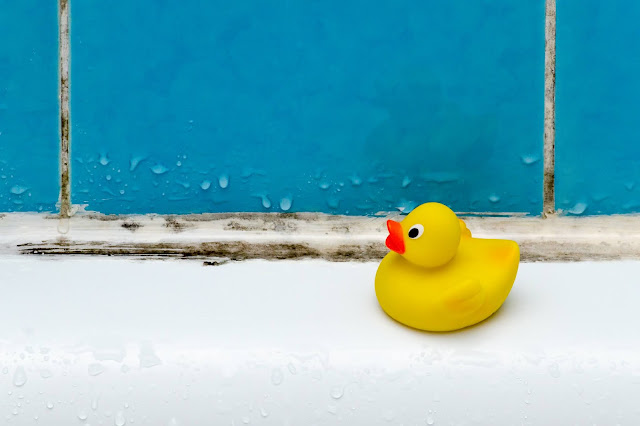With water damage claims on the rise, we hear a lot of talk these days about the dangers of mold. Within 24 to 48 hours of water damage, mildew and mold can start growing on wood products, tiles, drywall, carpets, fabrics and other organic materials. Even worse, it will continue to grow until steps are taken to eliminate the source of moisture, and effectively deal with the problem.
So what is the difference between mold and mildew? Plain and simple, mildew and mold are both fungi. Fungi can live in many different types of environments such as in soil, on vegetation, and on surfaces exposed to moist conditions like a wall or ceiling after flood damage. Fungi reproduce by spores and can spread quickly.
What is Mildew?
Mildew is mold in its early stage and often the term is used interchangeably with the word mold. That whitish-gray, powdery substance sometimes seen on the leaves of a plant is mildew. Mildew is a surface fungi that grows on organic material like plants and food as well as wood, drywall, upholstery, fabric, wallpaper, drapery, ceiling tiles, and carpeting.
How is it different from Mold?
Mold ranges in color from green to gray, brownish and black. It may appear fuzzy, flat or even slimy. Green slimy mold may develop in the damp, shady areas of decks and even vinyl siding, while indoors, mold can develop on grout, tile and other surfaces found in and around bathrooms and other areas with high humidity and inadequate ventilation.
Dangers of Mildew and Mold
In a battle between mildew vs. mold, which presents more problems and danger? It depends on several factors.
The powdery mildew often found on the leaves of a houseplant, typically poses little danger to you, but it can harm the plant. However, anyone that suffers from mold allergies should avoid touching that mildew. If contact occurs, wash hands thoroughly and never touch your face/eyes/nose after coming in contact with mildew.
According to the Government of Canada, exposure to mold can cause the following reactions:
- eye, nose and throat irritation
- coughing and mucous (phlegm) build-up
- wheezing and shortness of breath
- worsening of asthma symptoms
- other allergic reactions
Some people are more vulnerable to the effects of mold than others. This may include children, seniors and people with medical conditions (like asthma and severe allergies). Since some people are more sensitive than others, there is no "safe" limit for mold.
Some airborne molds can cause severe lung infections in people with very weakened immune systems (like those with leukemia or AIDS, or transplant recipients).
The Need for Mold Remediation
Any home or business that’s suffered any type of water damage (from firefighting efforts, roof leak, burst pipe or flood) needs professional assessment quickly.
Contact Inspect it All Services immediately after any water disaster - as mold can begin developing within 24 to 48 hours.
Trust our professional technicians for a comprehensive mold remediation plan.
Call 1-306-540-6832


Comments
Post a Comment